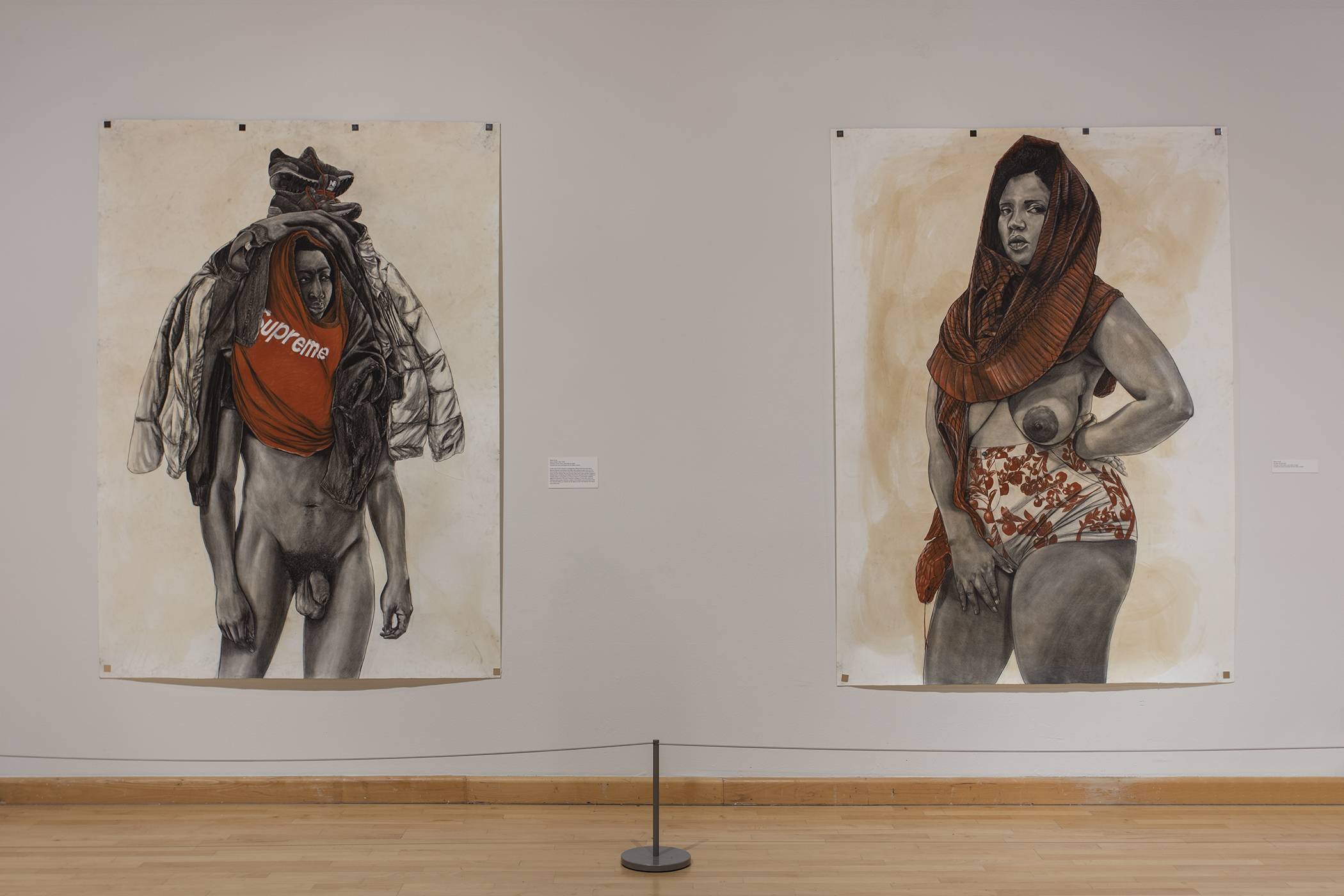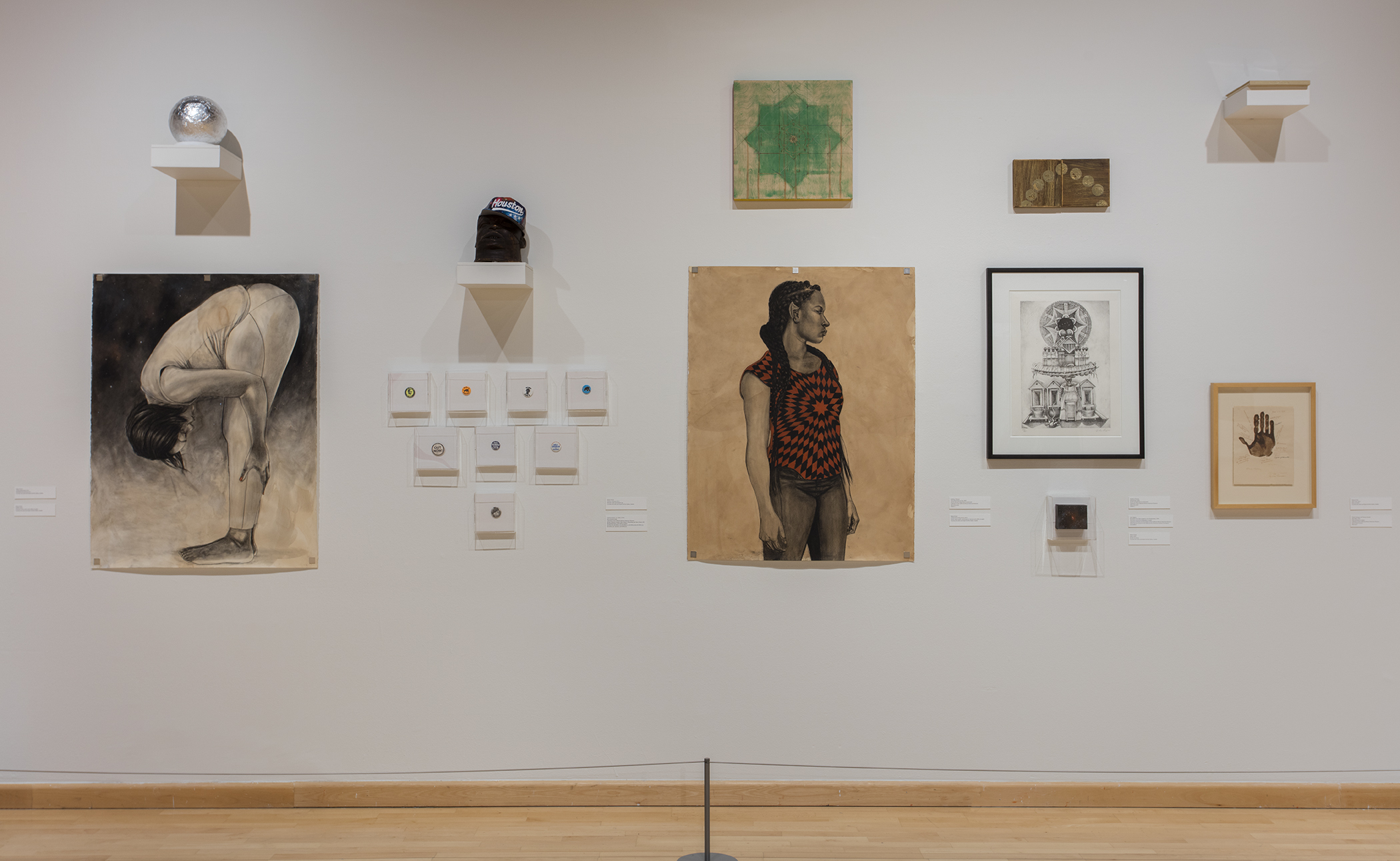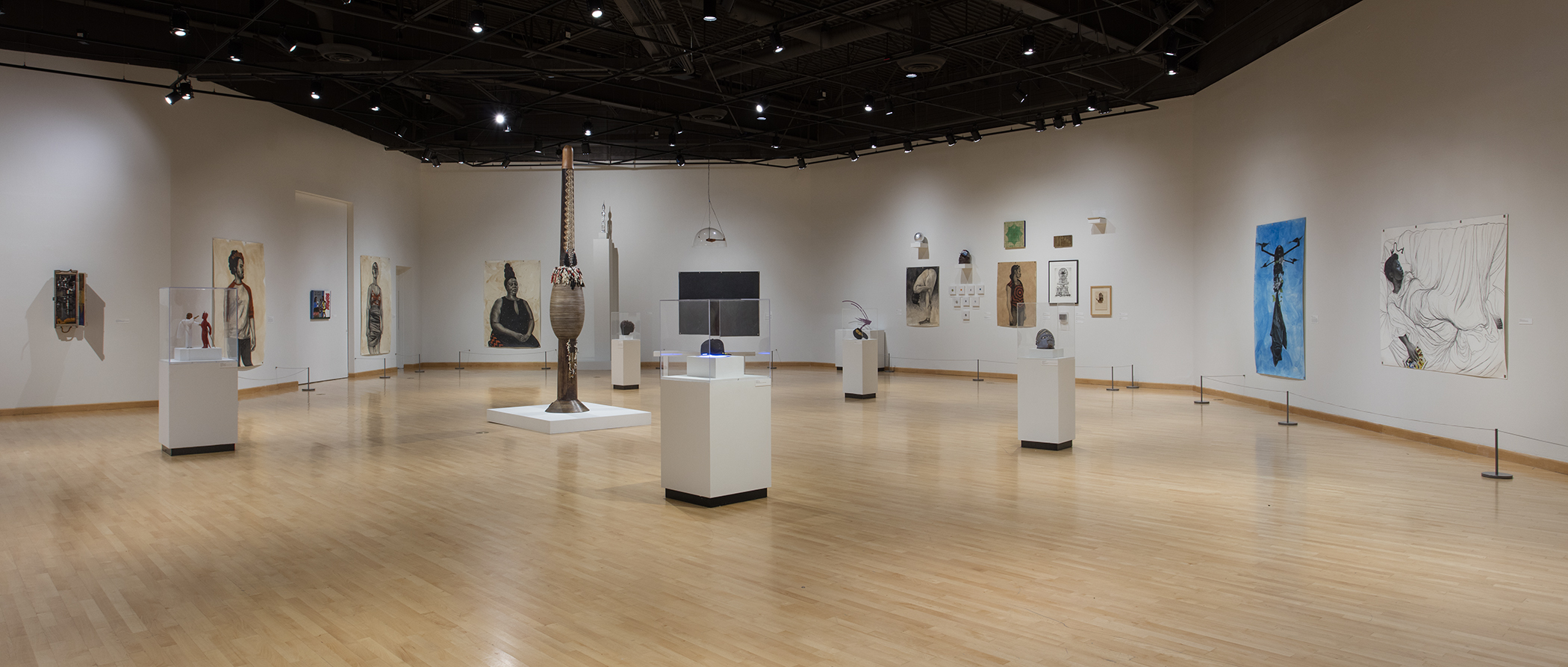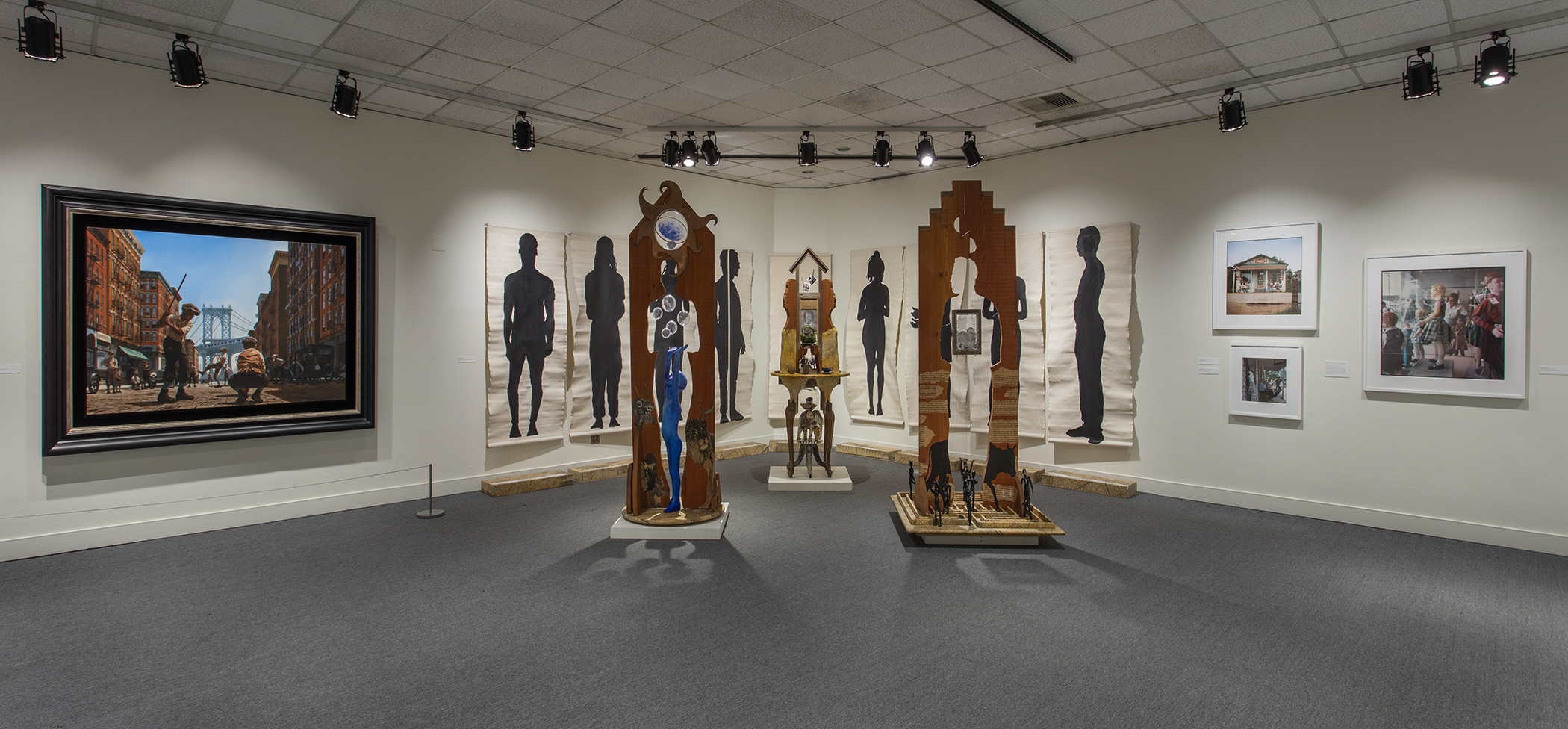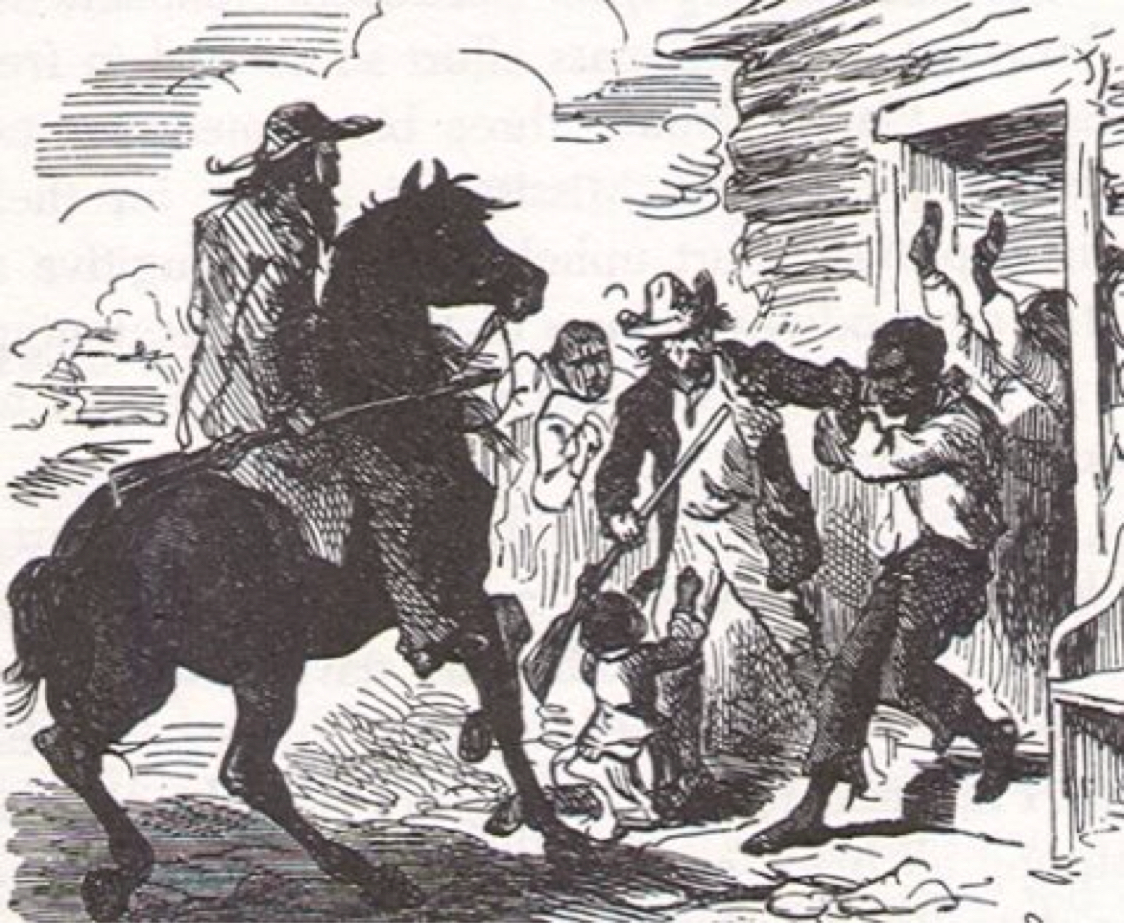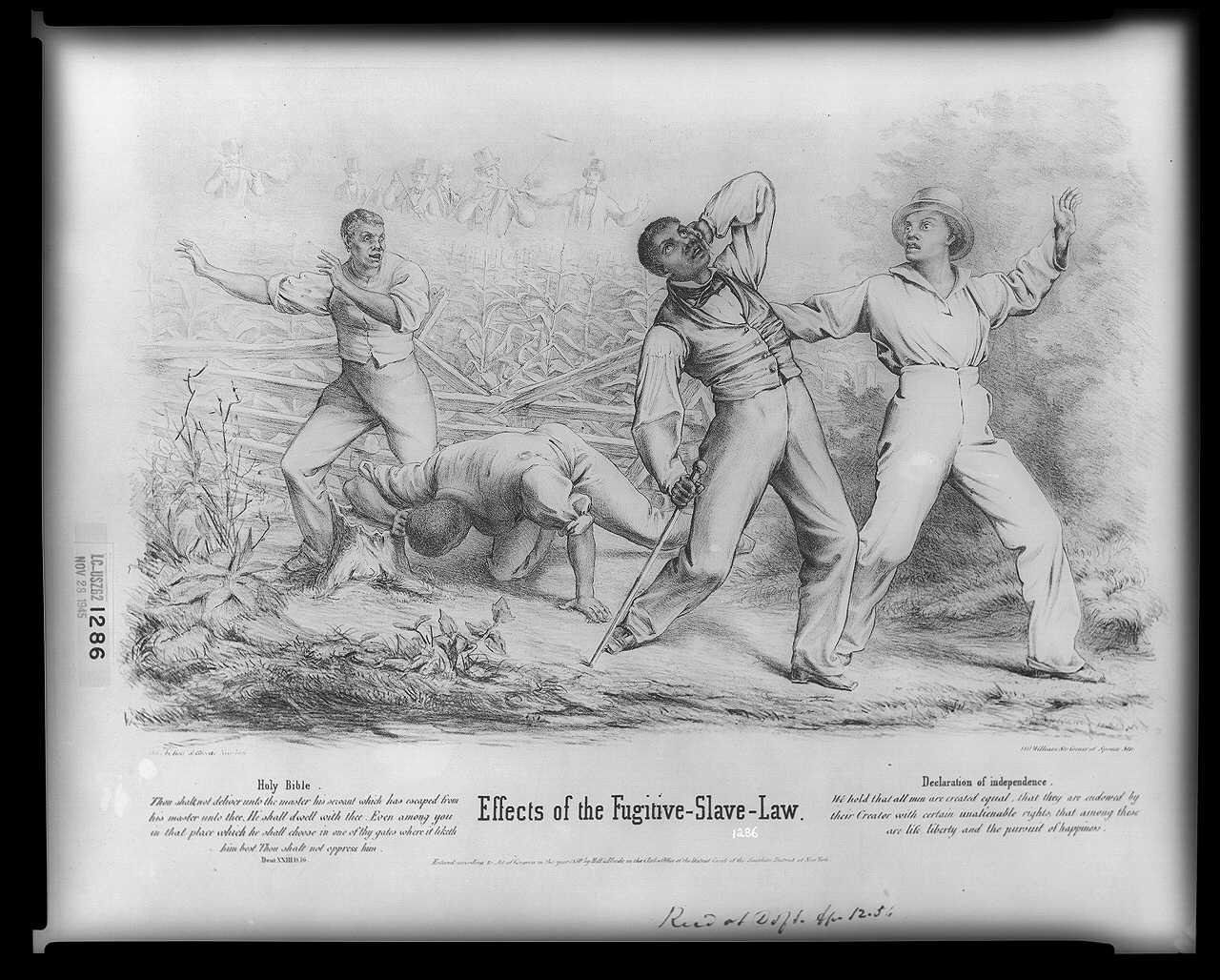Each of the five exhibitions currently on view at the California African American Museum (CAAM, www.caamuseum.org) stands on its own, but it is the sum total that makes the trip to Exposition Park worthwhile. On the whole, it’s intellectually, emotionally, historically, and contemporarily engaging. There’s a lot to see, but it’s digestible and not as overwhelming as some of the big-ticket museums in town. The fall offerings at CAAM find a balance between the “history” function of a museum and the “art” side of it. Art without history has no context, and history without art lacks emotion.
*The Notion of Family* traces African-American identity as defined through notions of family over generations. It has context and feeling. The exhibition features a number of artists and a variety of works, from historical documents, to documentary art, to art. A number of Gordon Park’s photographs from the mid-twentieth century complement documentary photos by Tracy Brown from the beginning of this one. William E. Pajaud has a couple of powerful monochromatic lithographs, while the serigraphs of Faith Ringgold explode with color and community. Kadir Nelson’s large oil painting *Stickballers* (2016) is a tense, cinematic scene of early nineteenth century children playing in the street. The vivid complementary reds and cyans bring an immediacy to the nostalgic scene.
It is unbelievable to think that we once had slaves in this country, that is of course until one looks around and sees its legacy alive today. *California Bound: Slavery on the New Frontier 1848-1865* engages with the subject of California’s involvement in slavery; first enforcing, later rejecting the Fugitive Slave Law. *Los Angeles Freedom Rally, 1963* documents a moment in the Civil Rights movement when Rev. Dr. Martin Luther King Jr. addressed a crowd of 40,000 at Los Angeles’ Wrigley Field (yes, we had a Wrigley Field in South Los Angeles – it was torn down in 1969). Both exhibitions were curated by Tyree Boyd-Pates (History Curator and Program Manager) and Taylor Bythewood-Porter (Assistant History Curator).
Nina Chanel Abney’s paintings are at their strongest when didactic, such as *Untitled (XXXXXX)* and *Untitled *, which reverse the typical power dynamic of white cop/black man. They’re at the most interesting when that same visual vocabulary is applied in less straightforward ways. The colors and repeated shapes evoke a system of communication, but one that is not predetermined. In this, one sees her inspiration from emoji. Pictographs that are meant to communicate, but in open-ended and combinatorial ways. She applies bold, supersaturated colors in solid fields. Like any good story, the full effect of each piece unfolds over time. Layers of reference from pop culture, the news, Internet terminology, cartoons, and scenes of racial inequity vibrate next to each other as do her impeccably selected hues. Abney’s paintings all seem just about to get out of hand, but a deft sense of humor keeps it all together. The pieces create this layering effect similar to having multiple screens and windows open at any one time: syntax gets jumbled, letters become shapes become colors, and yet something coherent still manages to come forth.
Layers of history, personal reference, and spiritual symbolism permeate the works of Robert Pruitt. Like Abney, he’s a figurative painter as well. But whereas Abney’s figures are highly chromatic, graphically abstracted, mediated figures — Pruitt’s large-scale figures rendered in charcoal, conté, and coffee are immediate, and evoke empathy and emotion. The title of the show is *Devotion*, and religious practices is a recurring theme in the work. In Pruitt’s world, the spiritual is omnipresent. *I turned myself into myself* depicts a woman in repose, her face glowing with what appears to be a heavenly, blue light. The light actually is emanating from a clip-on reading light, clipped into her own hair. A page from a Silver Surfer comic depicting that character’s origin suggest that spiritual revelation can com from the most unlikely of sources. There’s also a strain of techno-optimistic Afro-futurism within the work, embodied by a piece title *Archangel*, which depicts a drone carrying, among other things, a shirt with the words “I can’t breathe” emblazoned on it. The piece suggests the power of inverse surveillance, or sousveillance, may have for correcting injustices visited upon the black community by the criminal justice system. This piece sits directly across the gallery from John Thomas Riddle Jr.’s 1973 mixed-media assemblage *Pieces at Hand, Spirit versus Technology Series*, which also suggests a link between technology and spirituality. Mar Hollingsworth, curator of the exhibition, points out that Pruitt selected certain artifacts and pieces from CAAM’s collection to supplement the work (among them a John Outterbridge sculpture, two John Biggers lithographs, a headdress from the Yoruba of Nigeria, and a wig belonging to Ella Fitzgerald). This combination of museum artifacts and art pieces remind the viewer that art is never divorced from the culture and history that give rise to it. Still, the real stars of the show are the figures themselves. There’s a real sense of individuality – highly specific and yet fir The drawings are layered, figures rendered in charcoal on coffee ground, adorned with clothing and other accoutrement rendered in rich red conté. Though rendered in humble materials, the figures carry themselves and hold the page with a regal elegance. Pruitt is a superb draughtsman, able to capture gestures that are but tics, a fleeting glance, a loaded exhale. The figures flit between poised concealment and spontaneous revelation.
*Robert Pruitt: Devotion* is on view through February 17, 2019. *Nina Chanel Abney: Royal Flush* is up until January 20, 2019; and *California Bound: Slavery on the New Frontier, 1848-1865* comes down the day after. *Los Angeles Freedom Rally, 1963* and *The Notion of Family* are both on display until March 3, 2019. Admission to the museum is free, and CAAM is located in Exposition Park, Los Angeles.





